The Architectural Wonders of Tashilhunpo Monastery: A Photographer’s Paradise
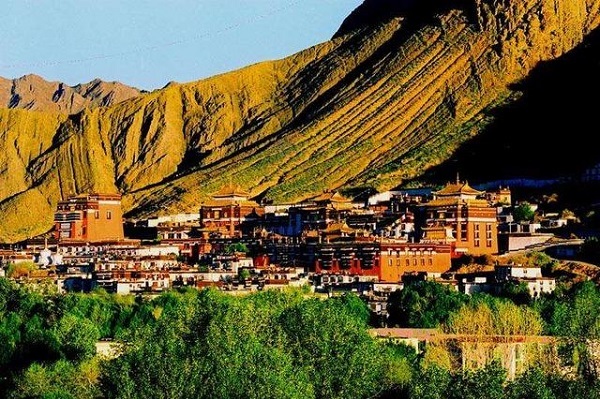
An Essential Guide to Visiting Tashilhunpo Monastery
Nestled against the breathtaking backdrop of Nyiseri Mountain, Tashilhunpo Monastery stands as a magnificent testament to Tibetan culture and spirituality. Founded in 1447 by Gedun Drupa, the first Dalai Lama, this sprawling complex is not only the largest monastery in Shigatse but also a revered seat of the Panchen Lama, the second highest spiritual authority in Tibetan Buddhism. As you step through its ancient gates, you will be transported into a world where vibrant colors, intricate architecture, and the rhythmic chants of devoted monks converge to create an atmosphere steeped in reverence and history.
Tashilhunpo Monastery offers visitors a unique opportunity to explore its many wonders, from the stunning Coqen Hall and its sacred chapels to the serene pathways that wind around the monastery, frequented by earnest pilgrims. Each corner of this spiritual haven tells a story, whether it’s through the striking chortens that house the remains of revered lamas or the lively debates and scripture readings that provide insight into the monastic life.
For those seeking an immersive experience, timing your visit with the annual Tashilhunpo Monastery Festival allows you to witness the unveiling of magnificent thangka paintings, a highlight of Tibetan religious culture. Whether you are drawn by the allure of its architectural beauty, the profound spiritual ambiance, or the rich tapestry of Tibetan traditions, Tashilhunpo Monastery promises an unforgettable journey into the heart of Tibet. Prepare to be inspired and enriched as you explore this sacred ground, where the past and present beautifully intertwine.
In This Guide
- An Essential Guide to Visiting Tashilhunpo Monastery
- The Rich History and Legends of Tashilhunpo Monastery
- Main Highlights: What You Absolutely Can’t Miss
- Planning Your Visit: A Practical Guide
- Tickets: Prices, Booking, and Tips
- How to Get There: A Complete Transportation Guide
- Local Cuisine and Accommodation Nearby
- Frequently Asked Questions
- Final Thoughts on Your Trip
The Rich History and Legends of Tashilhunpo Monastery
Nestled on the southern slopes of Nyiseri Mountain in Shigatse, Tashilhunpo Monastery stands as a testament to Tibet’s rich spiritual and cultural heritage. Founded in 1447 by Gedun Drupa, the first Dalai Lama, this monastery is not only the largest in the Tsang region but also serves as the traditional seat of the Panchen Lamas, Tibet’s second highest incarnation. The name “Tashilhunpo” translates to “Auspicious Sumeru,” reflecting the monastery’s significance as a spiritual beacon for countless pilgrims and visitors alike.
The history of Tashilhunpo is deeply intertwined with the development of Tibetan Buddhism, specifically the Gelug school, to which it belongs. It is one of the Great Six Gelugpa Monasteries, along with Drepung, Sera, Ganden, Kumbum, and Labrang. Each of these monasteries plays a pivotal role in the religious landscape of Tibet, but Tashilhunpo holds a special place due to its unique heritage and the prominence of the Panchen Lamas, who have guided its spiritual lineage.
Throughout its long history, Tashilhunpo Monastery has borne witness to the tumultuous events that have shaped Tibet. It has survived invasions, political upheavals, and the ravages of time, all while maintaining its status as a center of learning and devotion. The architectural splendor of the monastery itself is a reflection of its historical importance, featuring an array of stunning halls, chapels, and stupas. Highlights include the grand Coqen Hall, the Chapel of Jampa, and the impressive tombs of the Fourth and Tenth Panchen Lamas, which are adorned with intricate chortens that house their relics.
Legends surrounding the monastery abound, adding an air of mystique to its already captivating presence. One popular tale speaks of a hidden treasure left by the early lamas, believed to be a source of spiritual insight and power. Pilgrims often recount experiences of divine encounters while walking the scenic kora that encircles the monastery, a practice that embodies the deep-rooted traditions of Tibetan Buddhism.
The monastery also plays host to vibrant festivals, such as the Tashilhunpo Monastery Festival, which features the unveiling of massive thangka paintings depicting various Buddhas. These events draw devotees and travelers from across the globe, eager to partake in the rich tapestry of rituals and celebrations that define Tibetan culture.
Visiting Tashilhunpo Monastery is not just a journey through the annals of history; it is an opportunity to connect with the living traditions of Tibetan Buddhism. As you wander through its sacred halls and witness the fervent devotion of the monks and pilgrims, you will find yourself immersed in a world where spirituality and history coalesce, offering a profound glimpse into the heart of Tibet’s religious heritage.
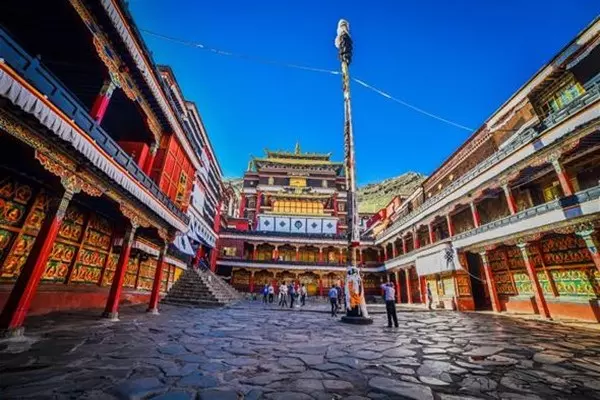
Tashilhunpo Monastery.
Main Highlights: What You Absolutely Can’t Miss
Visiting Tashilhunpo Monastery is an unforgettable experience that takes you deep into the heart of Tibetan Buddhism and culture. This magnificent site offers a wealth of highlights that you absolutely can’t miss:
Architectural Wonders
-
Coqen Hall
The centerpiece of Tashilhunpo, Coqen Hall, is a stunning example of traditional Tibetan architecture. Inside, you’ll find an impressive statue of Maitreya Buddha, a true marvel that captures the essence of Tibetan artistry and devotion. -
Chapel of Jampa
This chapel is dedicated to the Future Buddha and houses a 26-meter tall statue. The intricate details and serene ambiance make it a perfect spot for contemplation and photography. -
The Four Great Dratsangs
Explore these four major colleges of the monastery where monks engage in spiritual debates and study. Observing a debate session can provide deep insights into the rigorous intellectual traditions of Tibetan Buddhism.
Scenic Kora
Walking the kora (circumambulation path) around the monastery is an essential part of the visit. This scenic route not only allows you to walk alongside devoted pilgrims but also offers breathtaking views of the monastery itself, the surrounding mountains, and Shigatse city. It’s a peaceful journey that connects you with the spiritual atmosphere of the site.
Tombs and Chortens
Make sure to visit the ancient tombs of the fourth and tenth Panchen Lamas, which are adorned with dazzling chortens. These sacred structures hold the remains of revered lamas and are significant sites for reflection and respect. The intricate designs and historical importance of these tombs are not to be missed.
Buddhist Debates and Chanting
If your timing is right, witnessing the Buddhist debates and scripture chanting can be a transformative experience. These lively exchanges among monks highlight the depth of Tibetan Buddhist philosophy and practice. The sounds of chanting resonate through the halls, creating an atmosphere of spiritual intensity.
Tashilhunpo Monastery Festival
If you can, plan your visit during the Tashilhunpo Monastery Festival, a vibrant celebration featuring the unveiling of three giant Thangka paintings of Amitabha, Sakyamuni, and Maitreya Buddhas. This annual event is a feast for the senses, filled with color, sound, and a palpable sense of community among the attendees.
Conclusion
Tashilhunpo Monastery is more than just a historical site; it is a living testament to Tibetan culture and spirituality. From its awe-inspiring architecture to the rich traditions that unfold within its walls, every corner of the monastery invites exploration and reflection. Whether you are seeking spiritual enrichment or a deeper understanding of Tibetan heritage, Tashilhunpo Monastery is a destination that promises to leave a lasting impression.
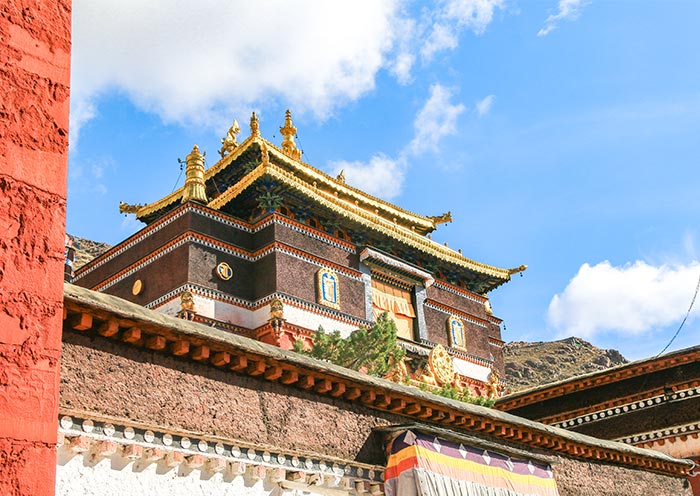
Tashilhunpo Monastery.
Planning Your Visit: A Practical Guide
Visiting Tashilhunpo Monastery is an enriching experience that combines breathtaking architecture, deep spirituality, and rich Tibetan culture. To make the most of your visit to this iconic site, here’s a practical guide that covers everything you need to know before you go.
Getting There
Location: Tashilhunpo Monastery is conveniently situated on the southern slope of Nyiseri Mountain, just a five-minute drive from the center of Shigatse City, Tibet’s second-largest city.
Transport Options:
– From Lhasa: The monastery is approximately 269 km from Lhasa. You can either hire a private car or join a small group tour, which often includes a seasoned local guide and driver. The journey typically takes about 5 hours.
– By Train: Alternatively, you can take a train to Shigatse and from there transfer to the monastery by taxi or local transport.
Travel Permits
Before you set out on your journey to Tibet, ensure you have the necessary travel permits. A Tibet Travel Permit is mandatory for all foreign travelers. You can obtain this through a travel agency that specializes in Tibetan tourism. Make sure to apply well in advance to avoid any delays.
Best Time to Visit
The ideal time to visit Tashilhunpo Monastery is between May and October when the weather is milder, and the monastery is at its most vibrant. However, if you want to experience the unique Tashilhunpo Monastery Festival, plan your visit around the festival dates, typically held in the late summer.
Opening Hours and Admission
- Hours: The monastery is open daily from 9:00 AM to 5:00 PM.
- Admission Fee: The ticket price is 100 CNY per person from May to October and 55 CNY per person from November to April.
What to See and Do
Architectural Wonders: Spend time exploring the stunning architecture and significant sites within the monastery, including:
– Coqen Hall: This is the main assembly hall and a must-visit for its intricate designs.
– Chapel of Jampa: Home to a massive statue of the Future Buddha.
– Great Dratsangs: The four major monastic colleges that offer fascinating insights into Tibetan Buddhist education.
Scenic Kora: Don’t miss the opportunity to walk the scenic kora (circumambulation path) that encircles the monastery. This peaceful walk allows you to enjoy stunning views of the monastery, Shigatse City, and the distant Shigatse Dzong.
Cultural Experiences: If time permits, observe a Buddhist debate or scripture chanting session. These events provide a glimpse into the vibrant monastic life and the teachings of Tibetan Buddhism.
Festivals and Events
If you can, plan your visit during the Tashilhunpo Monastery Festival, which showcases giant thangka paintings of Buddha. This three-day celebration is an immersive experience filled with cultural performances and religious rituals.
Accommodations and Dining
Shigatse offers a range of accommodations from budget hostels to more luxurious hotels. Consider staying near the monastery for easy access. Local dining options include Tibetan and Chinese cuisine, where you can enjoy traditional dishes such as momos (dumplings) and thukpa (noodle soup).
Tips for Travelers
- Altitude Awareness: Tashilhunpo Monastery sits at an altitude of 3,800 meters (12,000 feet). Acclimatization is essential; take it slow, stay hydrated, and consider consulting with a doctor before travel if you have health concerns.
- Dress Code: Respectful attire is recommended. It’s best to wear clothing that covers your shoulders and knees.
- Cultural Sensitivity: Be mindful of local customs and practices. Always ask for permission before taking photographs of people or sacred sites.
By following this practical guide, you can ensure a memorable and enriching experience at Tashilhunpo Monastery, immersing yourself in the spiritual heart of Tibet. Safe travels!
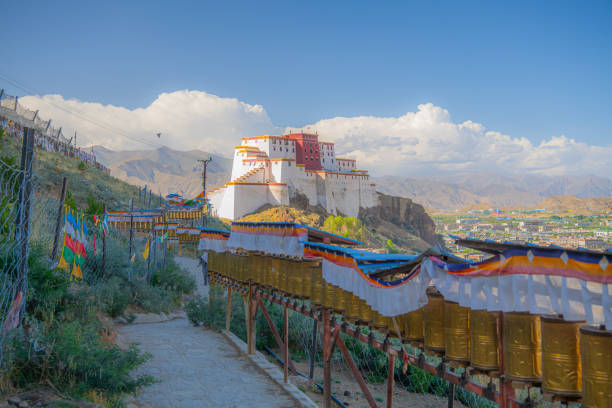
Tashilhunpo Monastery.
Tickets: Prices, Booking, and Tips
When planning your visit to Tashilhunpo Monastery, one of the most significant and picturesque Buddhist sites in Tibet, it’s essential to keep ticketing details in mind to ensure a smooth experience.
Ticket Prices:
– High Season (May to October): 100 CNY per person
– Low Season (November to April): 55 CNY per person
Opening Hours:
The monastery welcomes visitors daily from 9:00 AM to 5:00 PM. It’s advisable to arrive early to fully explore the vast grounds and enjoy the peaceful ambiance before the crowds arrive.
Booking Tips:
1. Purchase On-Site: Tickets can typically be bought at the entrance of the monastery. Cash is recommended, as credit card facilities may not always be available.
2. Guided Tours: Consider joining a guided tour. Local guides can provide valuable insights into the monastery’s history, architecture, and significance, enriching your visit.
3. Seasonal Events: If possible, plan your visit around the Tashilhunpo Monastery Festival, where you can witness the unveiling of giant Thangka paintings and experience the vibrant local culture.
Traveling to the Monastery:
– The monastery is conveniently located just a five-minute drive from central Shigatse. Options include hiring a private vehicle, joining a tour group, or taking a local taxi.
– For those traveling from Lhasa, expect about a 5-hour drive covering approximately 269 kilometers. Alternatively, you can take the Tibet train to Shigatse and then arrange a short transfer to the monastery.
By keeping these ticketing and travel tips in mind, you’ll be well-prepared to immerse yourself in the stunning beauty and profound spirituality of Tashilhunpo Monastery.
How to Get There: A Complete Transportation Guide
Getting to Tashilhunpo Monastery, one of Tibet’s most significant cultural and spiritual sites, is an adventure in itself. Nestled on the southern slope of Nyiseri Mountain in Shigatse, the monastery is accessible through various means of transportation. Here’s a comprehensive guide to help you navigate your journey to this breathtaking location.
1. Arriving in Tibet
By Air:
The most common way to reach Tibet is by flying into Lhasa, the capital. Lhasa Gonggar Airport (LXA) is well-connected with major cities in China, including Beijing, Chengdu, and Shanghai. From the airport, you can take a taxi or a pre-arranged shuttle to downtown Lhasa.
By Train:
Another fascinating option is to take the train to Lhasa. The Qinghai-Tibet Railway offers stunning views of the Tibetan plateau and is considered one of the highest railways in the world.
2. Traveling to Shigatse
Once you are in Lhasa, Shigatse is your next destination. There are two primary methods to reach Shigatse from Lhasa:
By Private Car:
Hiring a private car is the most flexible and comfortable way to travel. The drive takes approximately 5 hours and covers about 269 kilometers (167 miles). With a seasoned local driver, you can enjoy the scenic views along the way, making stops at picturesque locations or local attractions as desired.
By Bus:
For budget travelers, a public bus is available from Lhasa to Shigatse. The journey typically takes around 6-7 hours. Buses depart regularly from Lhasa’s bus station, and while they are less comfortable than private transport, they offer an authentic experience of local travel.
3. Reaching Tashilhunpo Monastery
Once you arrive in Shigatse, getting to Tashilhunpo Monastery is straightforward:
By Taxi:
The monastery is only about a 5-minute drive from central Shigatse. Taxis are readily available and offer a quick and convenient option to reach the monastery.
By Walking:
If you’re up for a bit of exercise, the monastery is walkable from the city center. The distance is roughly 1.5 kilometers (about a mile), and the route offers a chance to take in local sights and sounds.
4. Additional Tips
-
Altitude Considerations: Tashilhunpo Monastery is located at an altitude of 3,800 meters (12,000 feet). It’s essential to acclimatize to the altitude gradually to avoid altitude sickness. Spend a few days in Lhasa before heading to Shigatse.
-
Travel Permits: Don’t forget to obtain your Tibet Travel Permit, which is necessary for all foreign travelers. This can usually be arranged by your tour operator or travel agency.
-
Best Time to Visit: The best time to visit Tashilhunpo Monastery is between May and October when the weather is milder, and the monastery’s gardens are in full bloom.
By following this transportation guide, you can ensure a smooth and enjoyable journey to Tashilhunpo Monastery, where you’ll experience the rich spiritual heritage of Tibet. Happy travels!
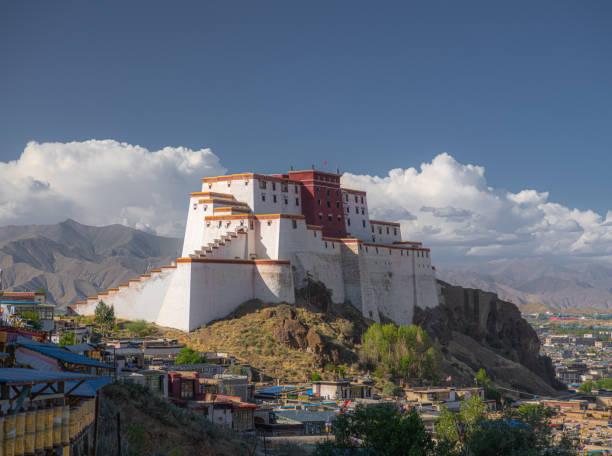
Tashilhunpo Monastery.
Local Cuisine and Accommodation Nearby
Visiting Tashilhunpo Monastery is not just about immersing yourself in Tibetan culture and spirituality; it’s also an opportunity to indulge in the local cuisine and find comfortable accommodations that enhance your travel experience.
Culinary Delights
When it comes to dining near Tashilhunpo Monastery, Shigatse offers a delightful range of Tibetan and Chinese dishes that are sure to please your palate. Here are a few recommended eateries:
-
Tashi Restaurant: Located close to the monastery, this restaurant serves a variety of traditional Tibetan dishes. Try the momo (steamed dumplings) and thukpa (noodle soup) for an authentic taste of local flavors. The cozy ambiance also makes it a great spot to relax after a day of exploration.
-
Shigatse Hotel Restaurant: This restaurant offers a mix of Tibetan and Chinese cuisine, with stunning views of the surrounding mountains. The yak meat dishes are a must-try, along with their hearty vegetable stir-fry. After your meal, enjoy a cup of butter tea, a Tibetan favorite.
-
Buddha Café: Perfect for a quick bite, Buddha Café serves delicious Tibetan snacks and pastries. Their chang (barley beer) is popular among locals and visitors alike, providing a refreshing way to unwind after a visit to the monastery.
Places to Stay
Finding comfortable accommodation in Shigatse is essential for a restful experience, especially after a day of sightseeing. Here are some top-rated options:
-
Tashilhunpo Monastery Guesthouse: For those who want to stay close to the action, this guesthouse offers simple yet comfortable rooms just a short walk from the monastery. It’s an excellent choice for travelers seeking a budget-friendly option with direct access to the monastery’s spiritual atmosphere.
-
Shigatse Hotel: This more upscale option features modern amenities and spacious rooms. The hotel also has a restaurant, making it convenient for guests to enjoy meals on-site. With its central location, you can easily explore other attractions in Shigatse.
-
Gyatso Hotel: Known for its friendly staff and clean accommodations, Gyatso Hotel offers a mix of Western and Tibetan-style rooms. The hotel’s rooftop terrace provides stunning views of the nearby mountains, making it a great place to relax after a day of cultural immersion.
By indulging in the local cuisine and staying at one of these comfortable accommodations, you’ll enhance your visit to Tashilhunpo Monastery, creating unforgettable memories of your Tibetan adventure.
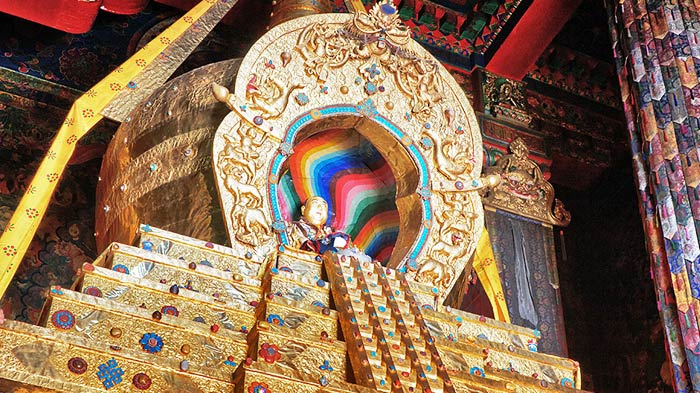
Tashilhunpo Monastery.
Frequently Asked Questions
-
What is the best time to visit Tashilhunpo Monastery?
The ideal time to visit Tashilhunpo Monastery is from May to October when the weather is milder and the skies are clearer. If you want to experience the vibrant Tashilhunpo Monastery Festival, plan your visit during the festival, typically held in the summer months. -
How do I get to Tashilhunpo Monastery from Lhasa?
You can reach Tashilhunpo Monastery by hiring a private car or joining a guided tour. The journey takes approximately 5 hours, covering around 269 kilometers. Alternatively, you can take a train from Lhasa to Shigatse and then a short drive to the monastery. -
Do I need a special permit to visit Tibet and Tashilhunpo Monastery?
Yes, foreign travelers require a Tibet Travel Permit to enter Tibet, which can be arranged through a travel agency. Ensure you obtain this permit before your trip, as it is mandatory for entry into the region. -
What are the opening hours and entrance fees for Tashilhunpo Monastery?
The monastery is open daily from 9:00 AM to 5:00 PM. The entrance fee is 100 CNY per person from May to October and 55 CNY per person from November to April. -
What should I wear when visiting Tashilhunpo Monastery?
Dress modestly and respectfully, as this is a sacred site. It’s advisable to wear comfortable shoes suitable for walking, and layers are recommended due to the altitude and varying temperatures. -
Are there any guided tours available at Tashilhunpo Monastery?
Yes, many tour operators offer guided tours of Tashilhunpo Monastery, which can enhance your experience by providing insights into its history, architecture, and the practices of Tibetan Buddhism. -
Can I participate in any local events or festivals at the monastery?
Absolutely! If you visit during the Tashilhunpo Monastery Festival, you will have the chance to witness the unveiling of giant thangka paintings and other cultural celebrations. Check local schedules to align your visit with these events. -
Is it possible to take photographs inside the monastery?
Photography is allowed in many areas of Tashilhunpo Monastery, but be respectful and check for any restricted zones. Always ask for permission before taking pictures of monks or worshippers to maintain the sanctity of the space.
Final Thoughts on Your Trip
As you wrap up your journey to Tashilhunpo Monastery, take a moment to reflect on the experiences that have woven together the rich tapestry of Tibetan culture and spirituality. This remarkable site, steeped in history and tradition, offers an intimate glimpse into the heart of Tibetan Buddhism. From the awe-inspiring architecture of the Coqen Hall to the serene kora paths lined with devoted pilgrims, every corner of Tashilhunpo tells a story that resonates deeply with those who wander its grounds.
Participating in rituals, witnessing the vibrant festivals, and engaging with the local monks can leave a lasting impact, igniting a sense of peace and connection to something greater. As you prepare to leave, remember that the spirit of Tashilhunpo is not just confined within its walls; it lives on in the hearts of those who have visited and shared in its sacred space.
Whether this trip marks the beginning of your exploration of Tibet or a cherished chapter in your travels, may the memories of Tashilhunpo inspire your future adventures and deepen your appreciation for the diverse cultures of our world. Safe travels, and may your journeys ahead be filled with wonder and discovery!